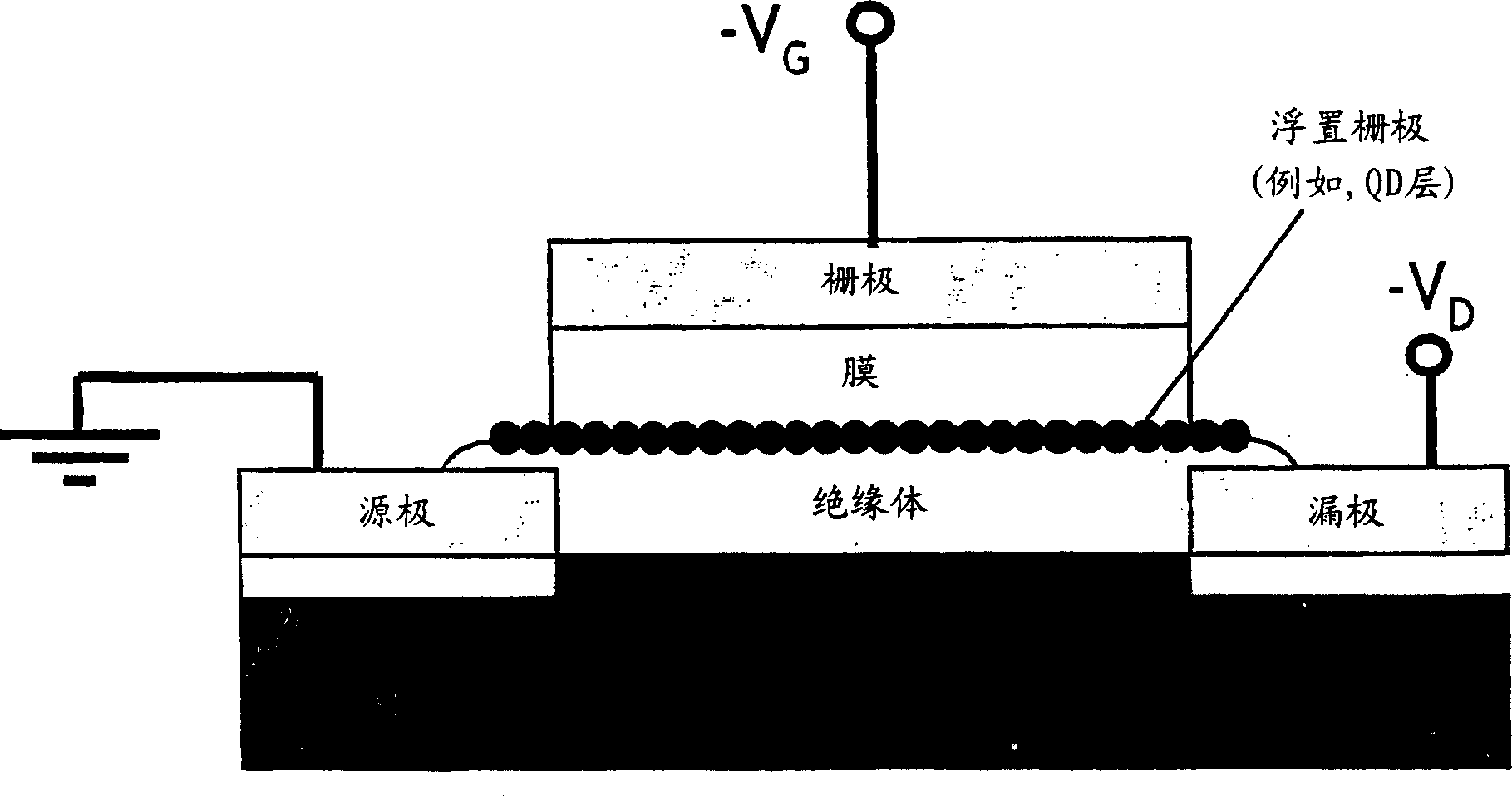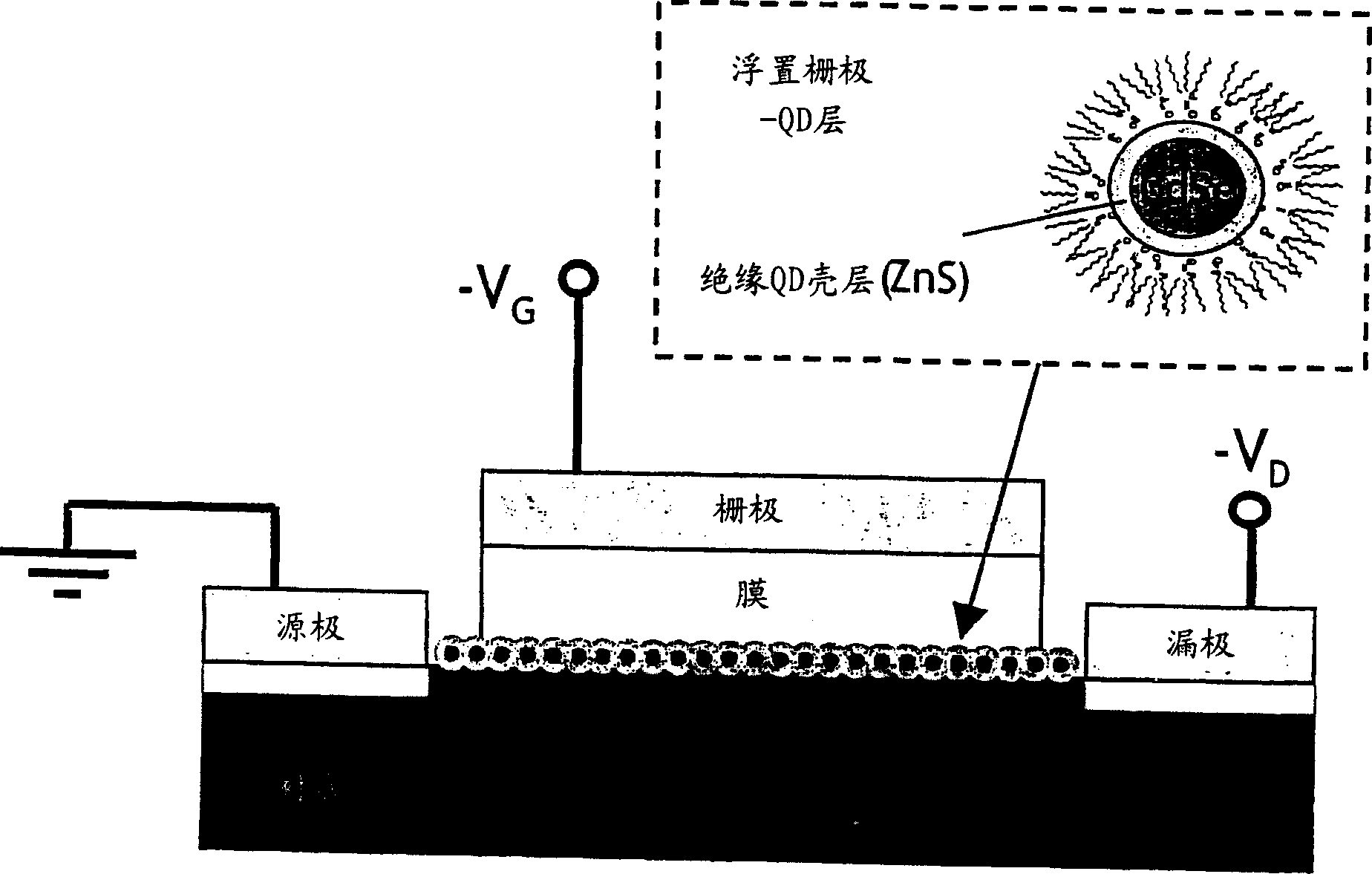Non-volatile memory device
A storage device and charge trapping technology, applied in information storage, static memory, read-only memory, etc., can solve problems such as channel tunneling and changing the threshold voltage of transistors
- Summary
- Abstract
- Description
- Claims
- Application Information
AI Technical Summary
Problems solved by technology
Method used
Image
Examples
Embodiment Construction
[0024] The memory device may include a room temperature integrable memory element. Memory elements can be used in a variety of electronic technology platforms, including organic, III-V, and even silicon electronics. The memory element may be a non-volatile memory device comprising a layer of charge-trapping material with selectable lateral conductance, such as nanoparticles with a selectable outer layer. Memory elements can be fabricated using room temperature methodologies to form hybrid organic / inorganic devices.
[0025] The memory element may be an array of chip-scale memory cells. Chip-scale memory cell arrays can be formed by exploiting the charge-trapping properties of nanoparticle monolayers. Single memory cell configurations include field effect transistor structures in which nanoparticles make up the floating gate. An example of such a structure is shown in figure 1 . This device is similar to other devices based on other materials, but has many advantages over ...
PUM
 Login to View More
Login to View More Abstract
Description
Claims
Application Information
 Login to View More
Login to View More - R&D
- Intellectual Property
- Life Sciences
- Materials
- Tech Scout
- Unparalleled Data Quality
- Higher Quality Content
- 60% Fewer Hallucinations
Browse by: Latest US Patents, China's latest patents, Technical Efficacy Thesaurus, Application Domain, Technology Topic, Popular Technical Reports.
© 2025 PatSnap. All rights reserved.Legal|Privacy policy|Modern Slavery Act Transparency Statement|Sitemap|About US| Contact US: help@patsnap.com



